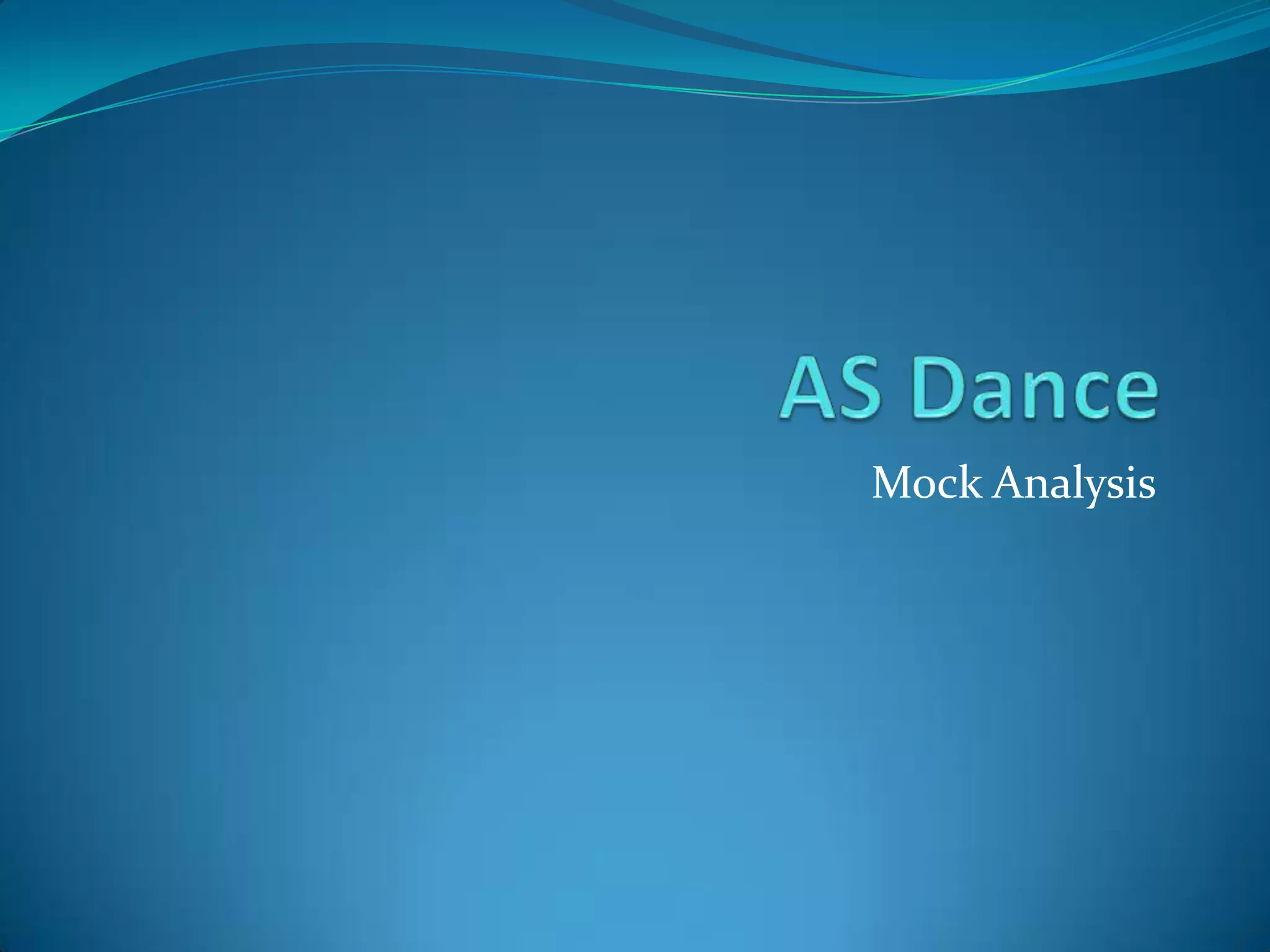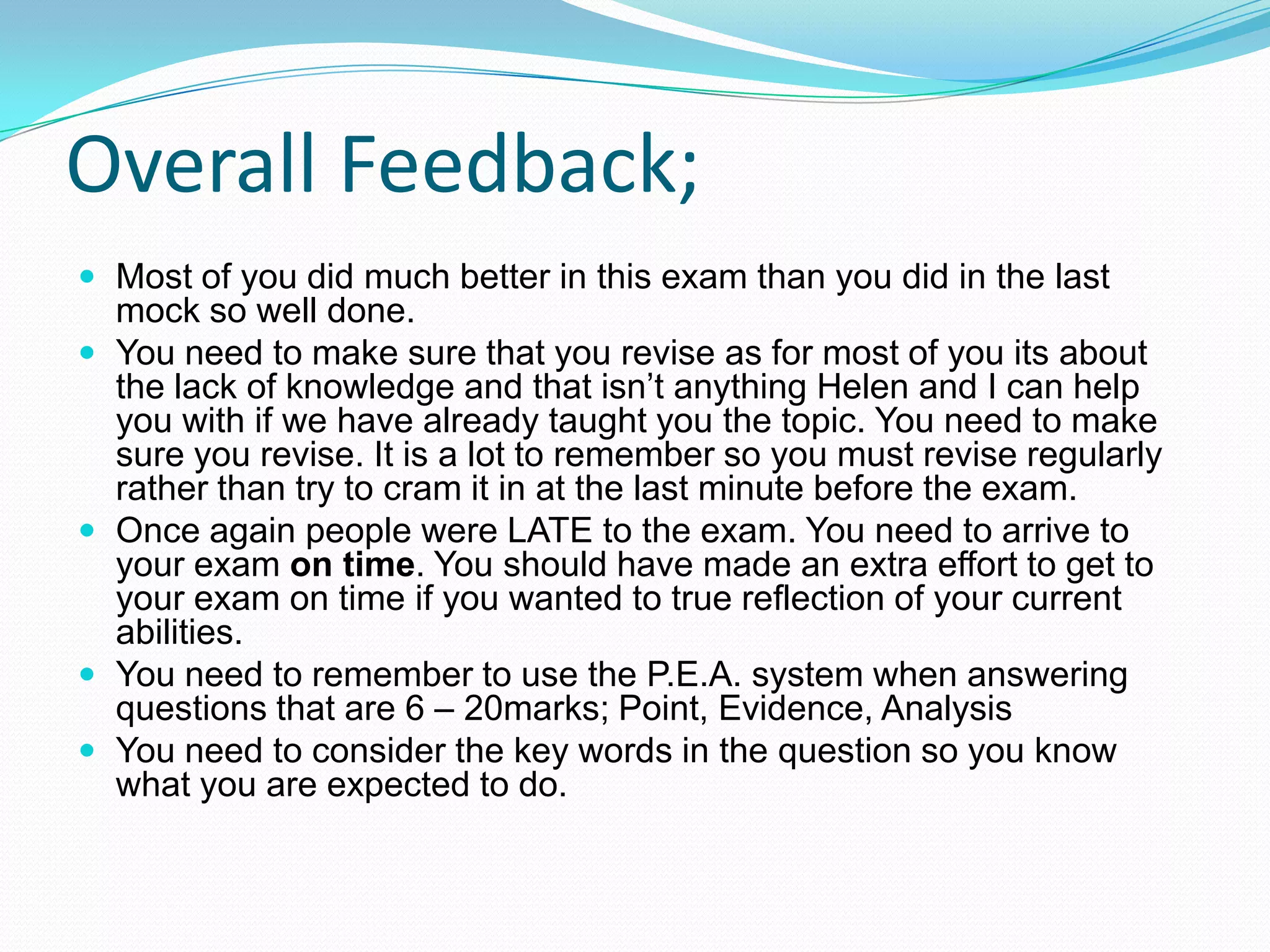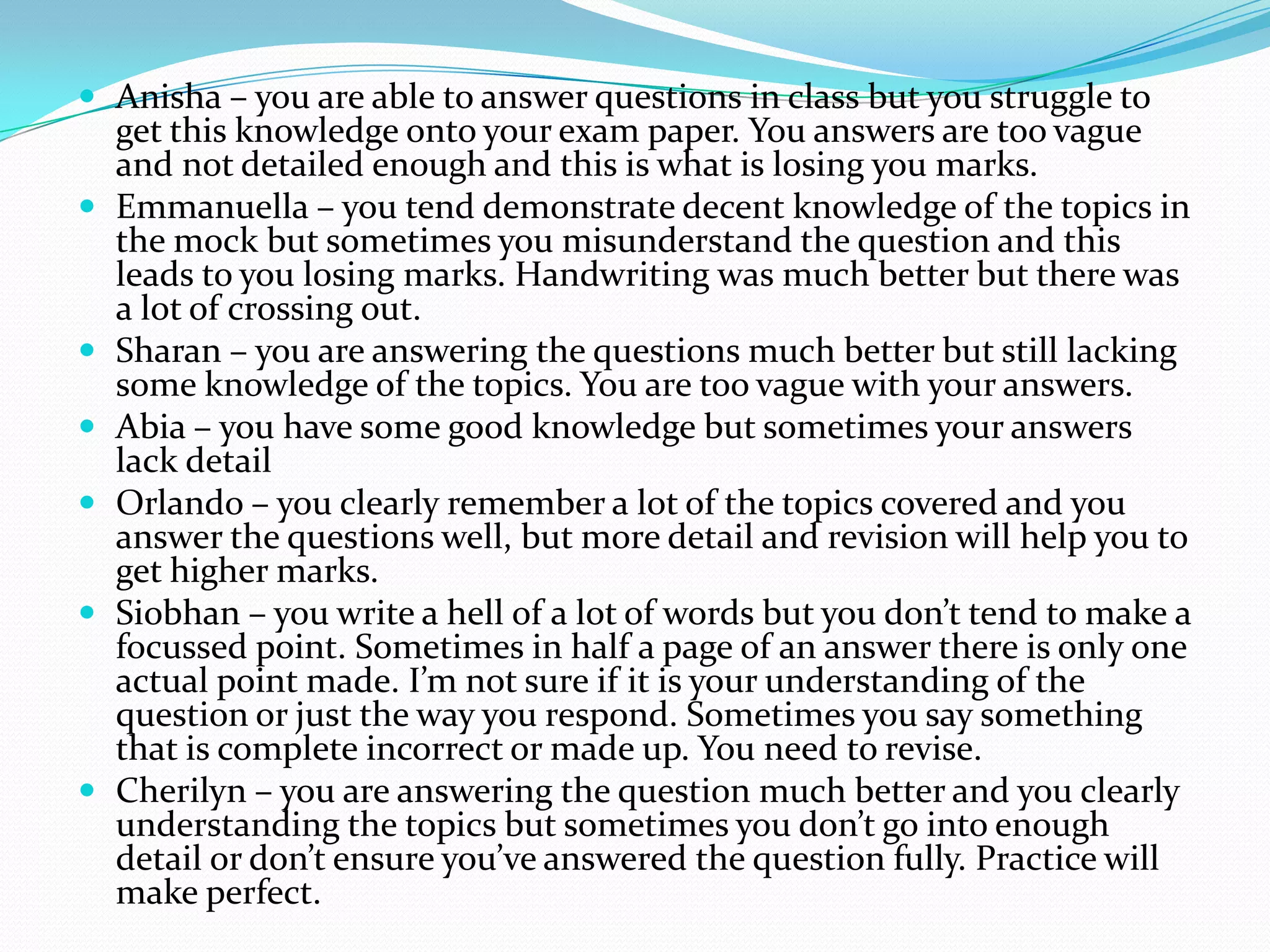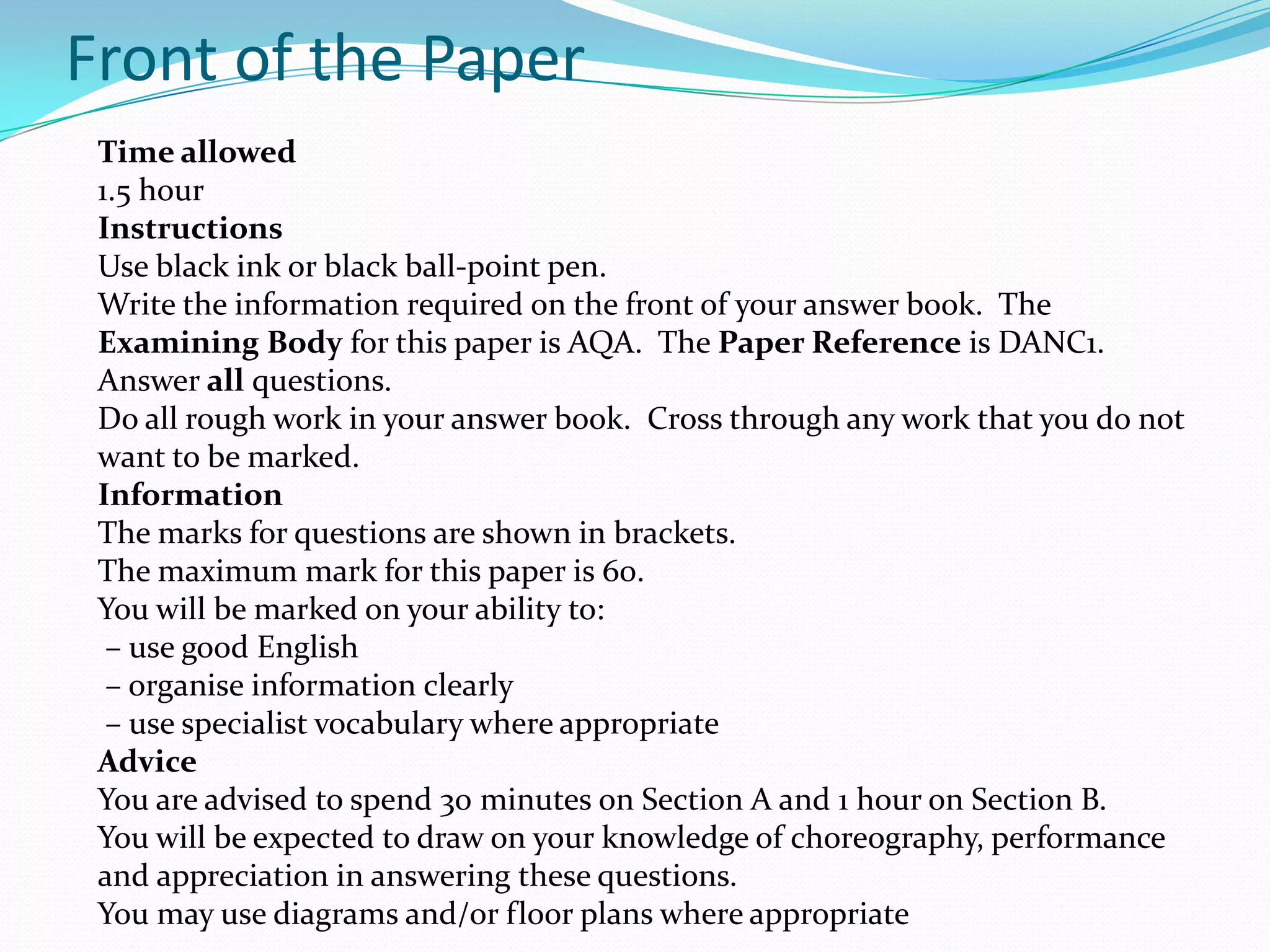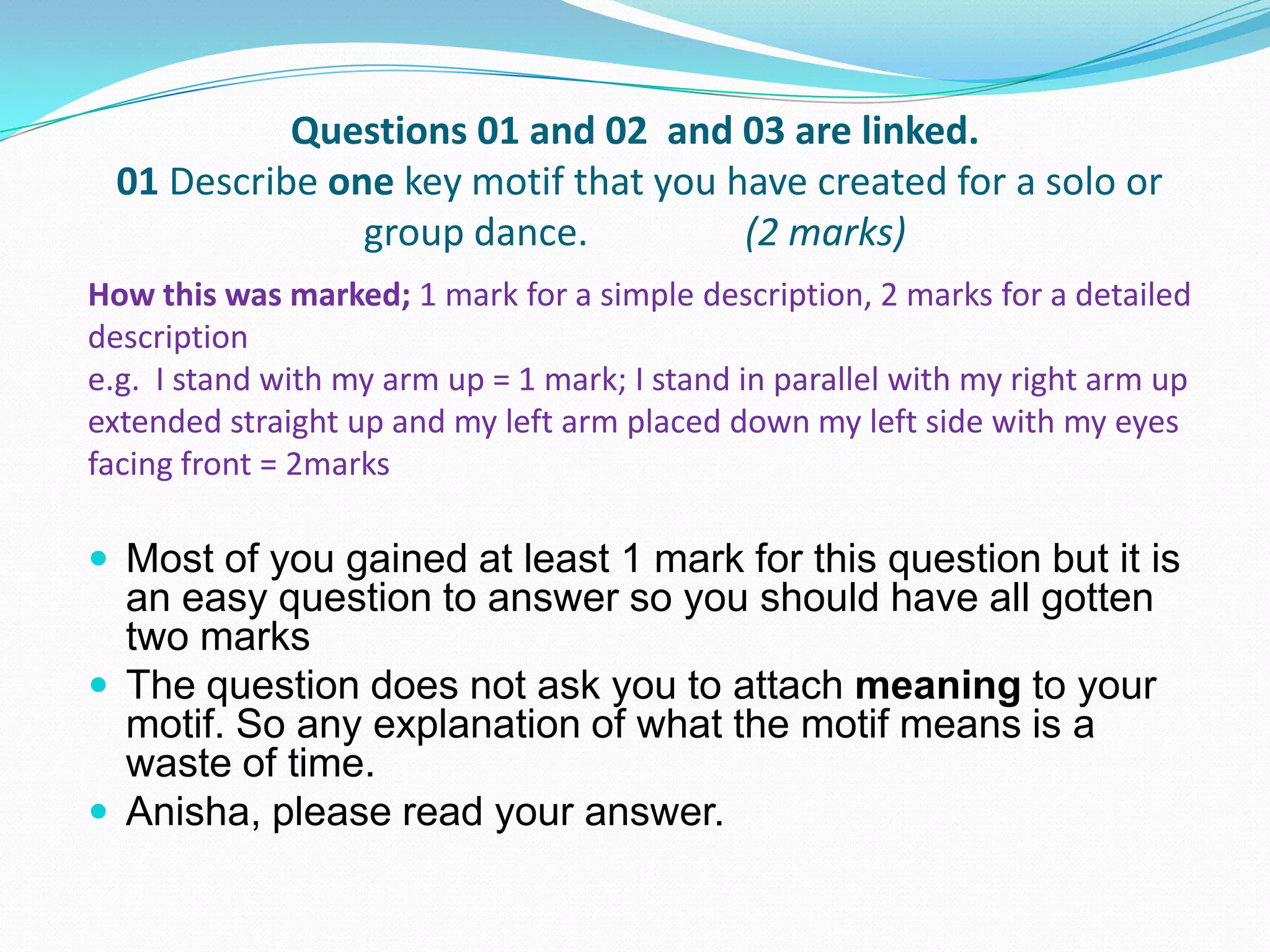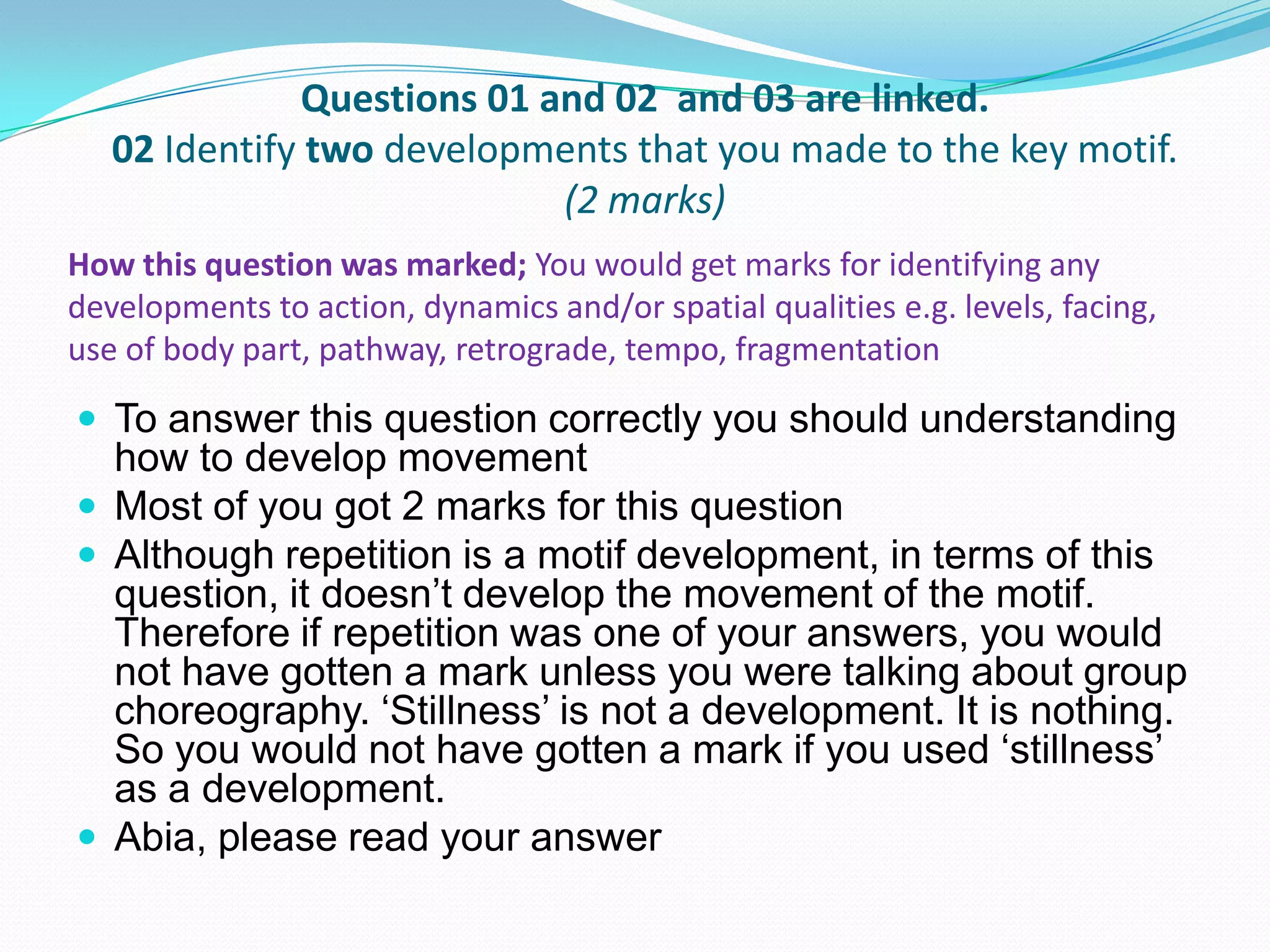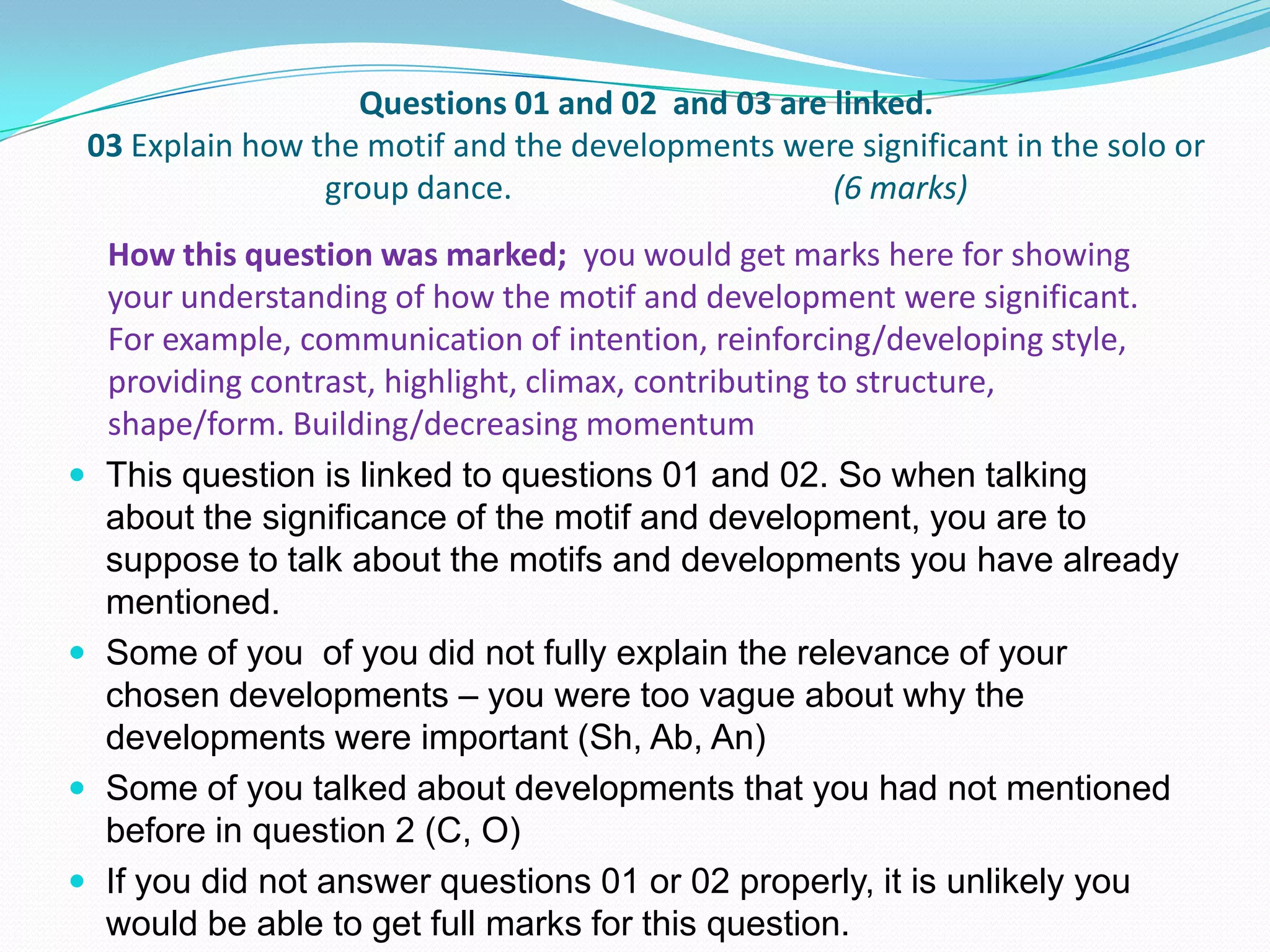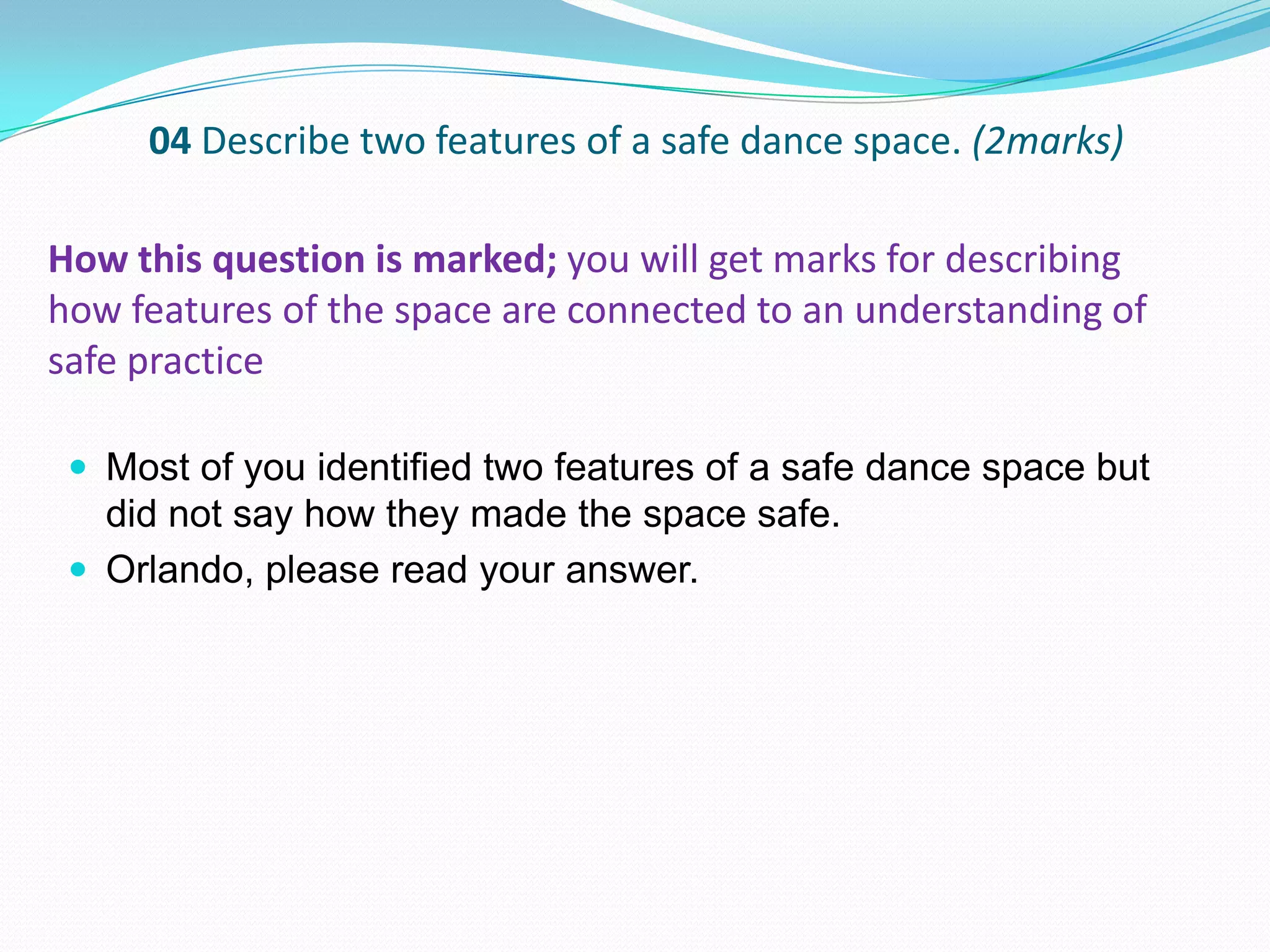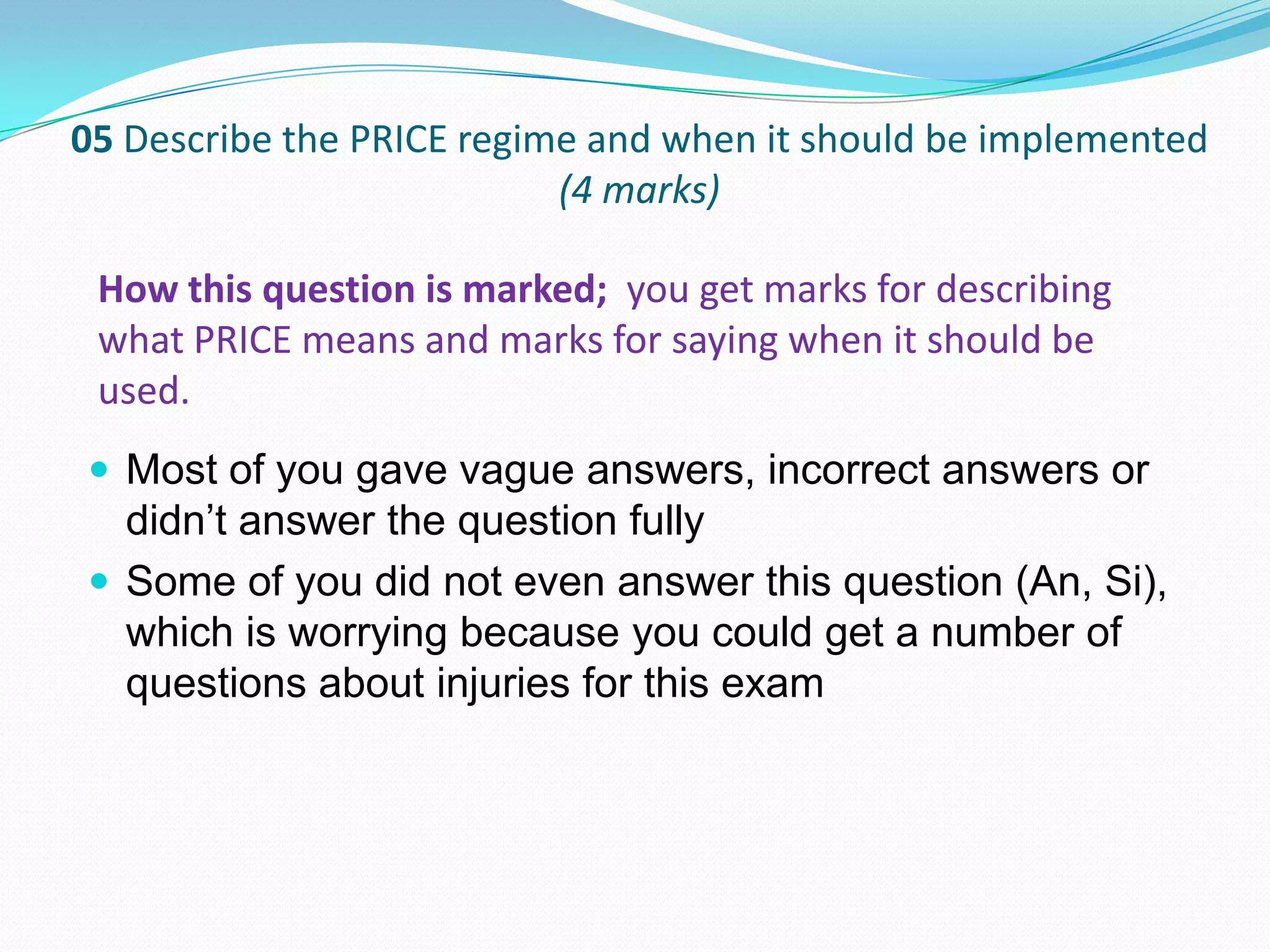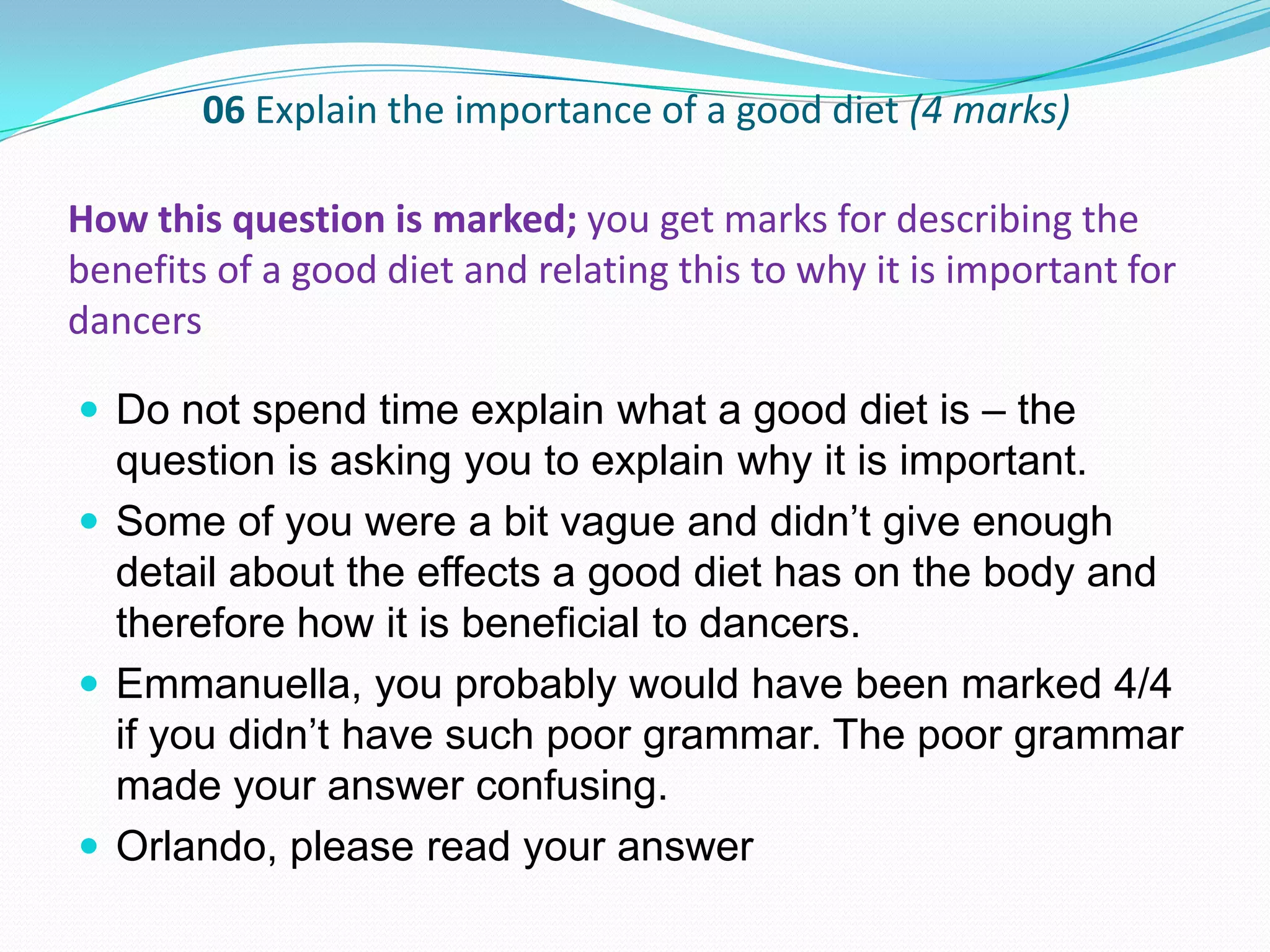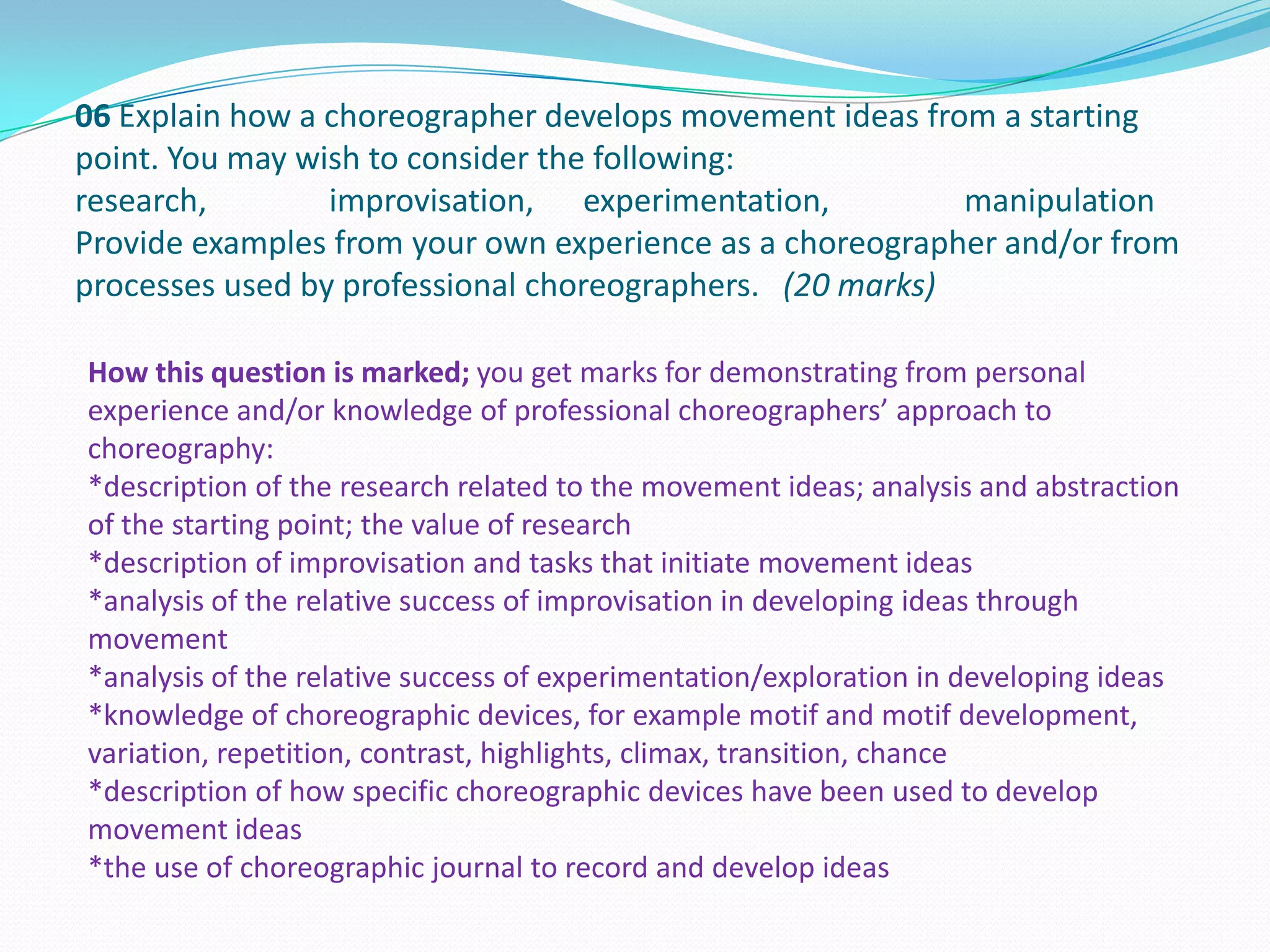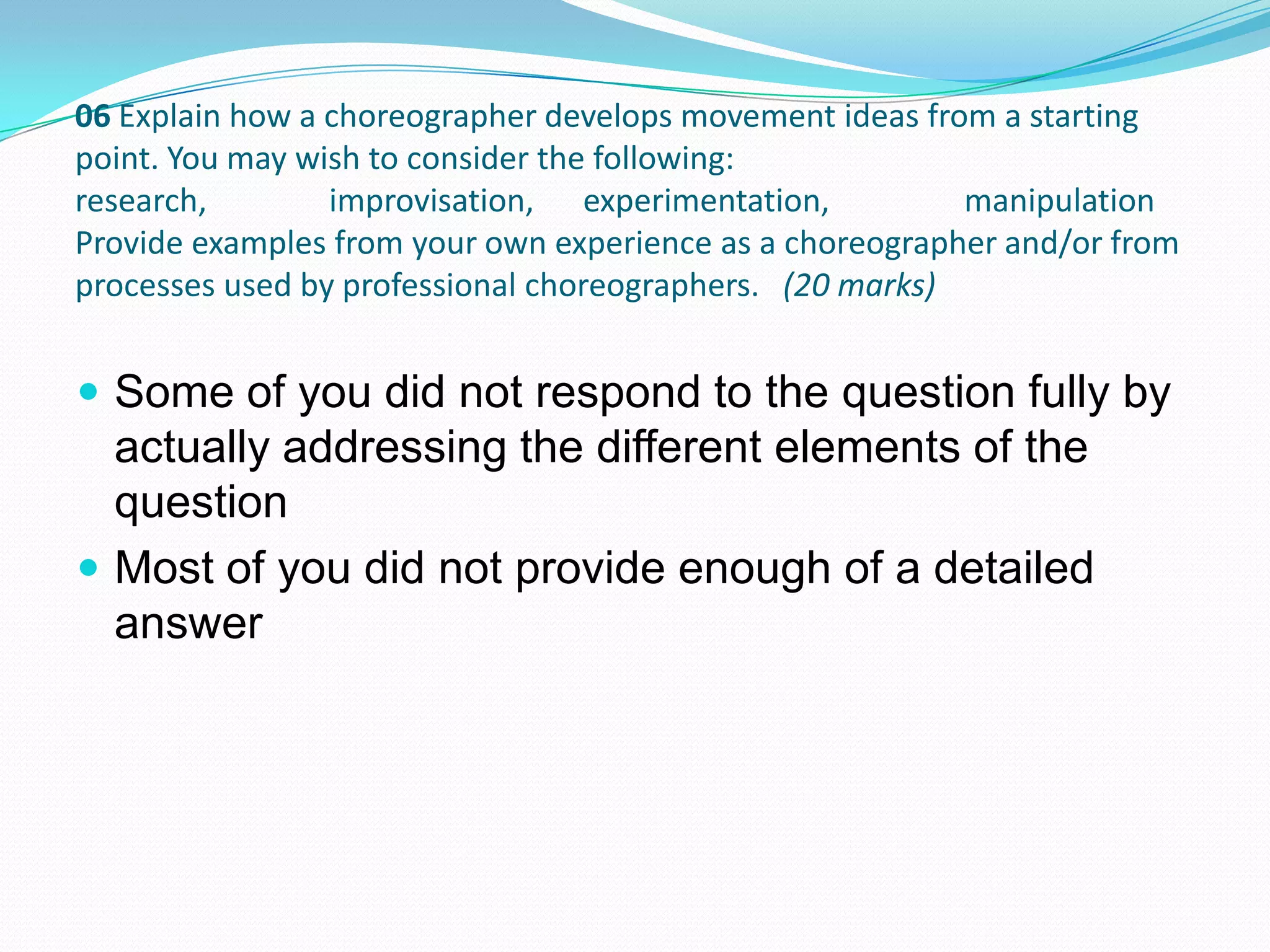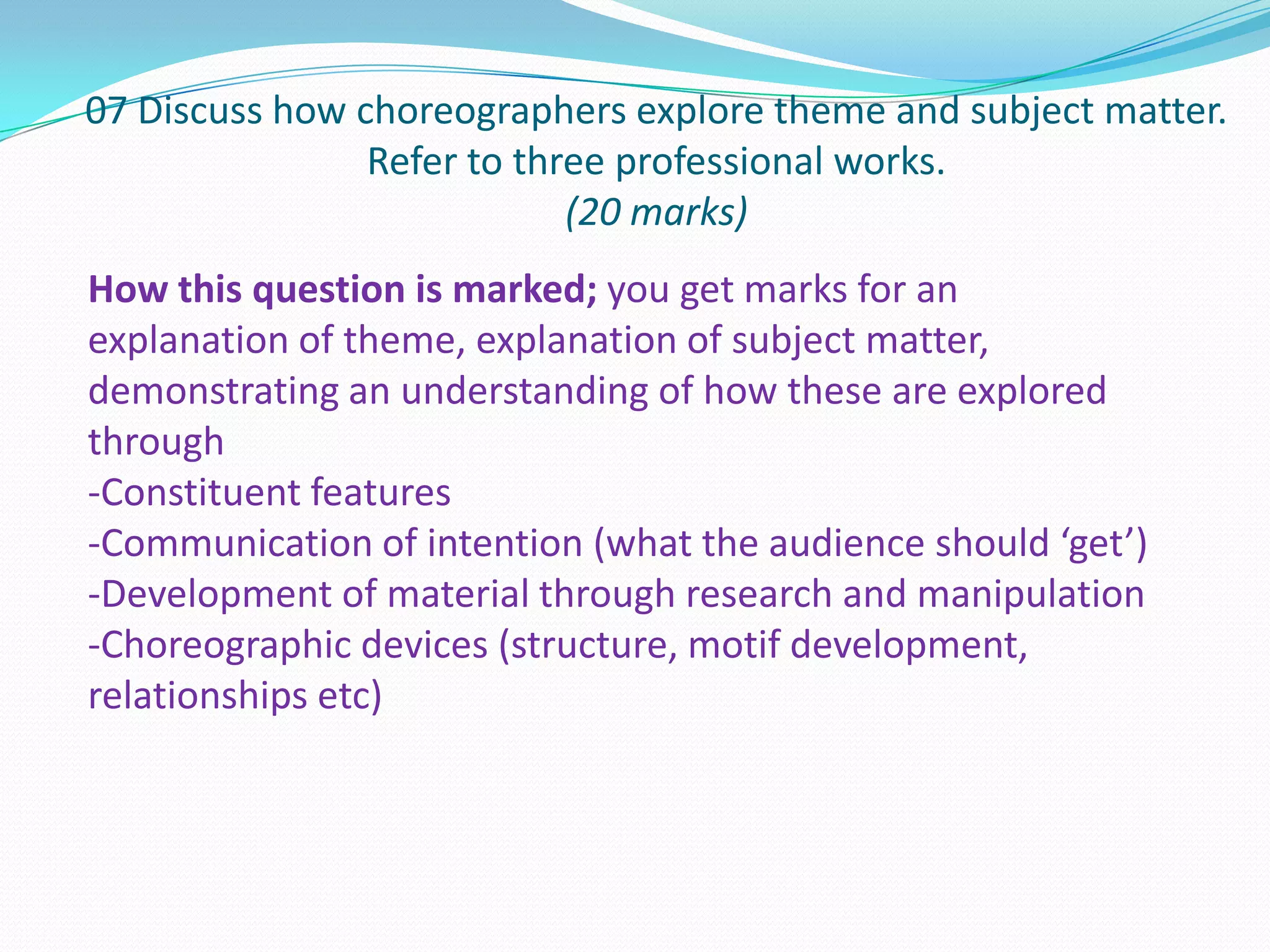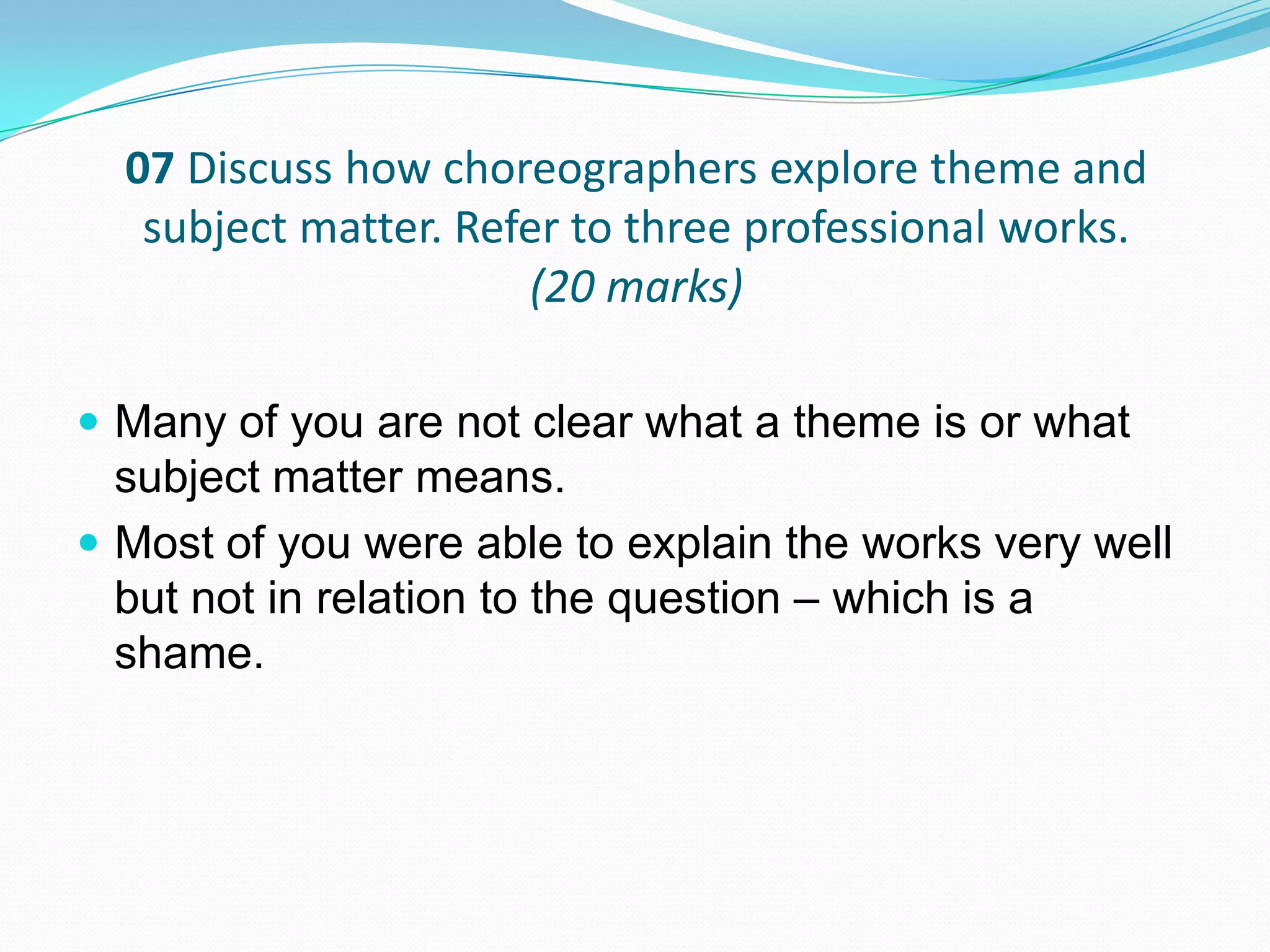The document provides feedback on a mock exam. It summarizes that most students performed better than the last mock exam but still need to improve their revision practices. It notes several areas where individual students can boost their marks, such as providing more detail in answers, focusing responses clearly, and arriving to exams on time. Tips are offered on using the P.E.A. system and considering key words when answering longer questions. Specific feedback is also given to certain students on improving vague answers, misunderstanding questions, handwriting legibility, and revising topics that were taught.
